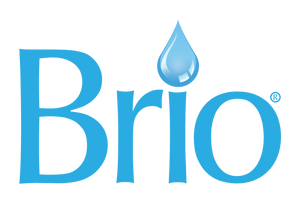By Sheila Anthony
On June 7, 2017, a headline in The Wilmington Star-News read: "Toxin taints CFPUA drinking water." The toxin in question was GenX, the trade name for an unregulated PFAS used in manufacturing nonstick coatings. It is manufactured by Chemours Co. at its Fayetteville facility located 100 miles upriver from Wilmington, North Carolina.
GenX was supposed to be the safer replacement for PFOA, a PFAS chemical that has been phased out by many manufacturers in the United States. However, GenX turned out to be just as toxic, if no more so.
Per- and polyfluoroalkyl substances (PFAS) were developed in the 1930s for use in nonstick and waterproof coatings. There are thousands of different kinds of PFAS, and they are used in everything from fire-fighting foam to dental floss to fast food containers. Unfortunately, they have been found in water, soil, air, food, animals, and humans. They do not break down or become harmless over time. For that reason, they are infamously known as “forever chemicals.”
Cancer, reproductive damage, low birth weight, and immunological effects are just a handful of harmful consequences that can arise as a result of exposure to PFAS.
The U.S. Environmental Protection Agency (EPA) has recently severely tightened its lifetime health advisory levels of the largest group of PFAS, PFOA and PFOS. The advisory levels were formerly 70 parts per trillion (ppt). They are now 0.004 ppt for PFOA and 0.02 ppt for PFOS. The EPA advisory level for GenX currently stands at 10 ppt.
To wrap you mind around what one part per trillion is, it’s the equivalent of a half a drop of iodine dropped into an Olympic-sized swimming pool.
And note the word “advisory.” PFAS are still unregulated chemicals, and currently no law is in place to keep them out of drinking water. Things are changing on that front, but until then, you want to keep them out of your drinking water.
How Do I Know if I Have PFAS in My Water?
You won’t know by your water’s taste, smell, or appearance. You’ll need to contact your state to find certified laboratories that will test for it. California provides a GIS map for locating environmental laboratories that have been accredited by the state.
It's also a good idea to get a copy of your municipality’s water quality report. These annual Consumer Confidence Reports (CCRs), which the EPA requires by law, offer information about the quality of your water. If you’re worried about PFAS, and don’t see them listed in the report, contact your municipal water district, and ask how or if the issue is being addressed.
Certain states are more heavily impacted by PFAS contamination than others. The Environmental Working Group (EWG) has an interactive map that indicates the PFAS sites throughout the United States that they’ve identified. The map will also tell you the total amount of PFAS found, and the years in which the area was tested by the EWG.
“Reverse Osmosis Systems Work Best”
After the Cape Fear River revelations in 2017, Duke University and North Carolina State University researchers teamed up to test which type of filtration was most effective at removing PFAS from water. They tested 76 different filtration systems, including refrigerator filters, pitcher filters, undersink reverse osmosis systems, and whole house filtration systems.
The results indicated that the undersink reverse osmosis filtration systems they tested reduced the presence of PFAS and GenX by 94% or more.

The study noted that activated carbon filters used in pitcher, countertop, refrigerator, and faucet-mounted styles were “inconsistent and unpredictable” in removing PFAS. Results for whole house systems also showed varied results as well and, in some instances, PFAS levels actually increased.
Your local water municipality is working as hard as it can to keep your water safe, but providing your home with a water filtration backup system is a good idea, especially when it comes to something like PFAS.
Explore the Brio line of undersink reverse osmosis filtration systems. These sleek, aesthetic units are powerhouses when it comes to removing contaminants like PFAS before they hit your drinking water. Each integrated system comes with a dedicated faucet for dispensing and two premium filter cartridges that contain 4 meticulous stages of filtration, including reverse osmosis.
Stay healthy. Stay safe.

Leave a comment